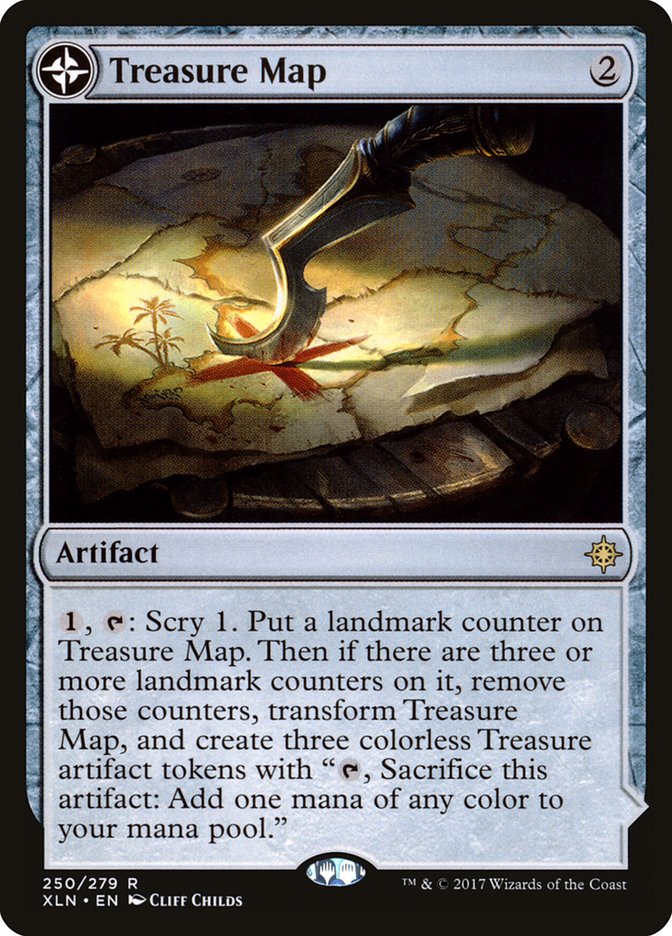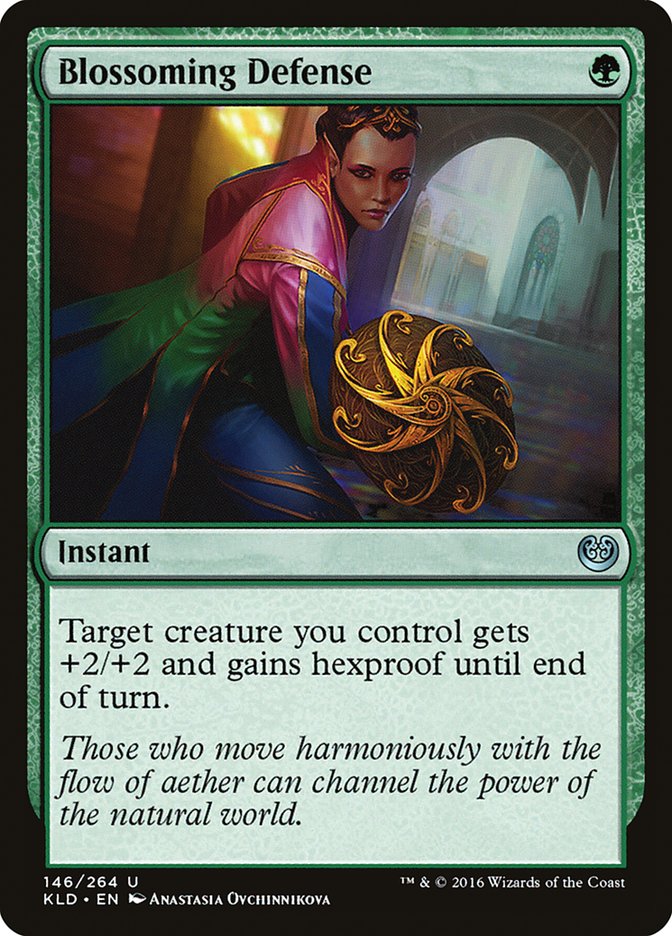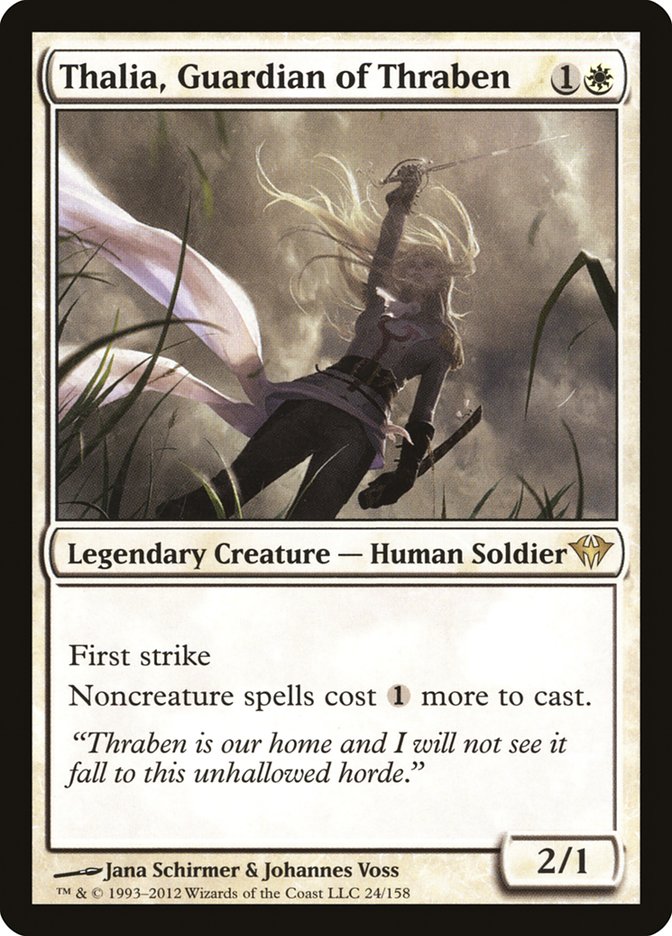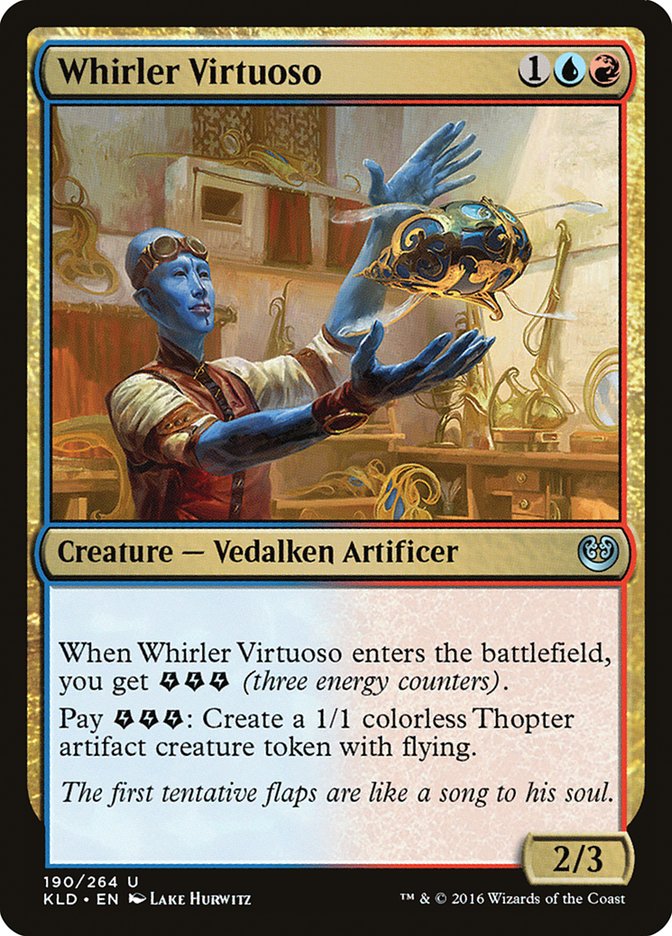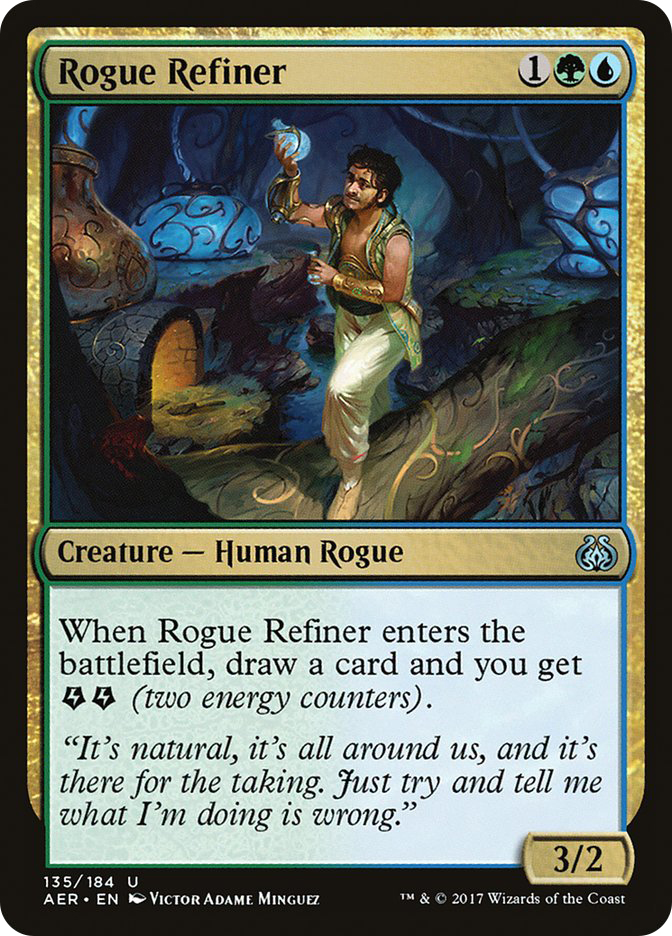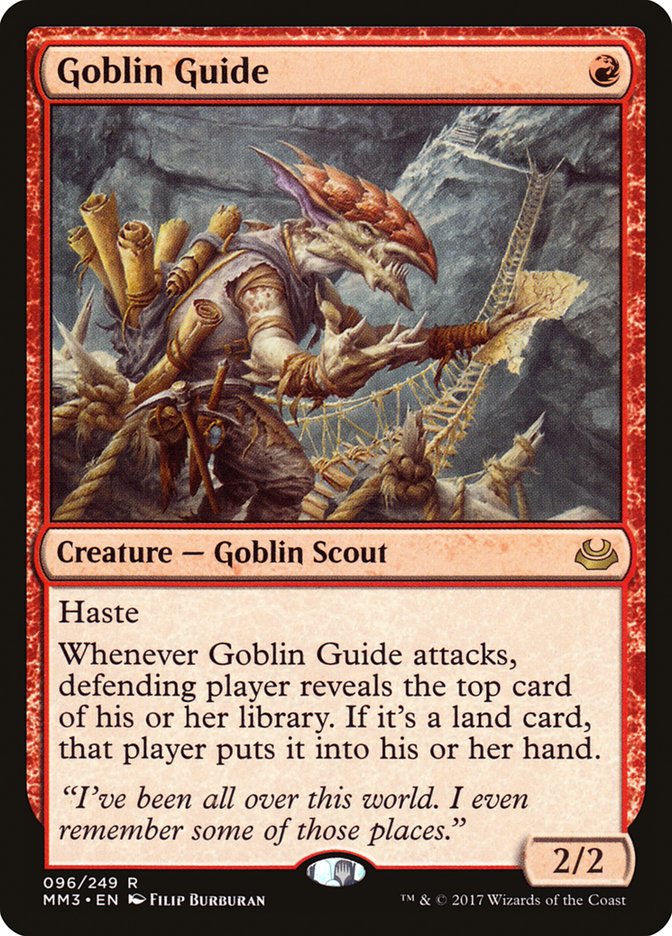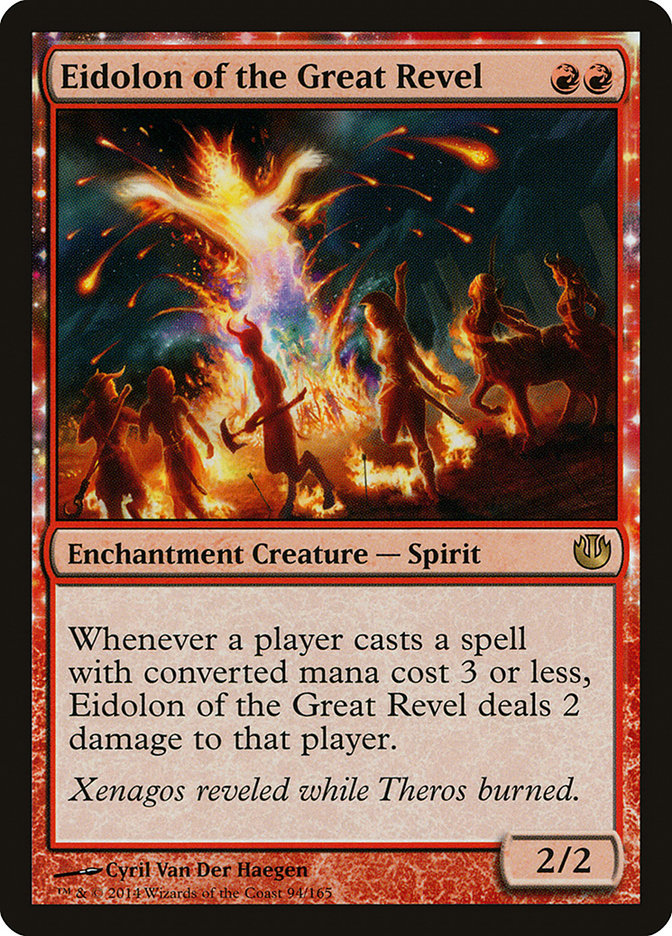Last week, Collins Mullen wrote an article about mistakes that got me thinking. In it, he adopts a process-oriented approach to mistakes. That is, instead of thinking of mistakes as the actual in-game actions that lead to defeat, he thinks of them as the thinking or lack thereof that led to those in-game actions. The mistake isn’t the attack with Deft Duelist; it’s the failure to think about the Qasali Ambusher you know you passed to your opponent.
Let’s back up. I’ve thought a lot over the years about mistakes in Magic. You see, I’m convinced that the Holy Grail of Magic writing is an article that explains how to figure out what the mistakes you’re making are. Finding non-obvious mistakes is the real trick of Magic. That play you made didn’t work out, but was that because it was wrong or because variance went against you? How can you tell?
Trust me, if I knew how to write that article, I would have. The most helpful thing I’ve ever come up with to say on the topic is “It’s always a mistake, but probably not the one you think it is.” True, but not particularly useful. But maybe thinking of mistakes in a process-oriented way allows something more useful to be said.
Indeed, in recent tournaments, the mistakes I’ve been the angriest with myself for aren’t specific plays, but times when I know I failed to think things through properly. I’ve missed interactions until they come up, played against fringe decks and played the match without thinking about their larger gameplan or what I should be looking to do. Afterwards, I’ll sit down and think about the match more fully, and often conclude that, even had I thought properly during the games, I’d still have made the same plays.
It never matters. I’m always still disappointed in myself for letting the pace or stress of the match get to me and not thinking appropriately during it. Finding ways to maintain focus and play at a consistent level throughout long tournaments has been much of my self-improvement work lately. There’s something to this process-oriented approach to mistakes.
Motivation and Understanding
If you’ve read through this introduction with the growing hope that I had reached some sort of epiphany and what you were about to read was my attempt to write the Holy Grail, I am sorry to disappoint you. I still have no idea how to write that article. What I have instead is an idea of where the Grail might lie, a sort of confusing treasure map.
If it’s better to think of mistakes as process problems with your thinking, it seems clear that, in order to play a mistake-free game of Magic, you need to deeply understand every aspect of the game in front of you. This includes understanding why you make every play you are making, and why your opponent might be playing the way they are. How difficult is attaining that level of understanding, really?
To find out, I want to dive into a very specific play pattern in Magic and see just how many layers of understanding we can extract from it. Any play pattern would do, but the one we’re going to look into today is the quintessential first level-up on the path to becoming good at Magic: holding your removal until their end step, taking an attack in order to do so.
First, an example. On Turn 2, your Jund opponent casts a Tarmogoyf. On Turn 3, they attack you with it before doing anything else. You have a Fatal Push that could take care of the problem for you, but the Tarmogoyf is still small, so you decide to just take the two damage. They then pass the turn without deploying another creature, and you go ahead and Push the Tarmogoyf in their end step.
This is a common play pattern we see and use all the time. But do we really understand why we do this? Often, it plays out exactly like in the example above: we end up removing the creature in the end step, paying two life for the privilege of keeping our options open for a couple more phases. Why is that good?
Creatures (11)
Lands (24)
Spells (25)

I think the concept had its genesis in decks like the above Jeskai list, decks that play removal spells and counterspells. This deck can Lightning Helix an attacker on Turn 3, but then it won’t have Logic Knot up for their play in the second main phase. Since counterspells are so inflexible in their timing, it’s important to contort your play to have the ability to use them as often as possible.
Even when you don’t actually have the Logic Knot in your hand, leaving up the mana for it makes your opponent play like you do. Taking that two damage opens up your potential plays by keeping your options open and constrains your opponent’s potential plays by keeping them worried about what you could have.
Really, what this all comes down to is the importance of the second main phase. If you’re ever interested in trying some wacky Magic, try playing competitive decks with your friends without that second main phase. It is, in my opinion, the most important phase and Magic without it would not look at all the same. Declining to use removal during combat to leave mana and cards available to respond to what our opponent decides to do in their last chance of the turn to cast sorceries and creatures is the hallmark of competitive play.
Narrowing Our Focus
But we need to zoom in a bit. Adding complicating factors like other spells we might cast off that same mana is giving us too much to consider. The goal of this exercise is to find as many layers of understanding as we can out of the smallest bit of Magic. Let’s restrict our thinking to decks like Jund or Game 1 Temur Energy, decks that realistically are only leaving up removal spells on the opponent’s turn. Further, let’s consider only the case where we have exactly one removal spell in our hand and the mana to cast it. Why and when should we take damage to leave that removal spell up, and when should we pull the trigger and cast it early?
Clearly, the main idea in not casting our removal spell when they attack is to try to hit a better target in their second main phase instead. In the Tarmogoyf example, if we were to Push the Tarmogoyf and then they were to cast a Dark Confidant we no longer had an answer to in their second main phase, we would look foolish. We pay some small amount of life for the possibility of finding a better removal target, and we do so whenever that amount of life doesn’t matter. When it does, we just go ahead and pull the trigger on the removal spell. Easy.
With that understanding, if the most important target for our removal spell is what is attacking us, we should just go ahead and pull the trigger on our spell, right? Not quite.
If Infect’s time as the best deck in Modern taught us anything, it’s that removing creatures mid-combat is a risky business. It’s a lesson some of us have to learn a few times; I for one have vivid memories of trying to deal with a Dreamstealer mid-combat, only to have it get Blossoming Defensed out of danger and put me cleanly out of the game. Of course, since it was a Dreamstealer and not an Inkmoth Nexus, I had to suffer on for a few turns yet.
The play pattern against combat trick decks is to remove end step or on your turn, so as to avoid the extra pain in combat if they do have the trick.
What if their best creature is a legendary permanent? A lot of decks out there, Jund among them, really would rather not deal with a Thalia taxing all their spells. But for the cleanest example, let’s pretend you are playing U/R Gifts Storm against a Death and Taxes player. You have two mana up and a Lightning Bolt in hand, which is good, because they have a Thalia on the battlefield and you don’t have a Baral, Chief of Compliance or a Goblin Electromancer. Should you cast the Lightning Bolt when they go to attack?
You know you want to kill that Thalia. You have to in order to win the game. You aren’t representing Remand by waiting, as you don’t have the three mana up that would cost. Thalia is their best card, bar none. And yet, you should still wait. Waiting until their end step guarantees that there will not be a Thalia on the battlefield during your turn, no matter how many redundant copies they have in their hand…assuming, of course, that they don’t have an active Aether Vial with two counters.
So legendary permanents can add a new wrinkle into this equation. Are there other cases where the possibility of a second copy changes the calculus?
Imagine you are playing Ramanup Red against Temur Energy. Whirler Virtuoso is Temur’s best card against you in most scenarios, and that’s certainly true right now. Unfortunately for you, they have one on the battlefield and it is currently attacking you. On the bright side, they only have three energy and you have a Chandra’s Defeat all ready to deal with it. It’s the card you care about the most, so you shouldn’t take two damage for no reason, right?
Well, here’s the thing about Whirler Virtuoso: two copies are very similar to one copy. That second copy isn’t doing anything besides donating three energy to the cause and being a 2/3. Unless, of course, the first copy dies. Then that second copy is critically important. In an ideal world, you’d leave them with no Whirler Virtuosos. But If that proves to be impossible in the second main phase, you might be better off holding onto your Chandra’s Defeat to deal with a Glorybringer later in this game you have no way of preventing becoming a grind.
Other times, a second copy of their best card won’t change the equation. Against Death’s Shadow decks, the card Death’s Shadow is your best Fatal Push target in almost every scenario. If they cast a second, you’ll still be happy you killed the first. When power and toughness is what matters about a creature, it’s rare for the number of copies to dramatically change the value of each individual copy.
Of course, making sure we hit the best possible target isn’t the only reason to wait until the end step for our removal. Sometimes we will be priced into making a tempo play of sorts and will be looking to kill any creature standing in our way. The key word there, of course, is “standing.” If they have a planeswalker we want to attack down, saving our removal spell to deal with blockers in the second main phase might be critical.
But it won’t always be as cut and dried as the opponent having a planeswalker to assault. Maybe you have two Glorybringers in your hand and have played out a Whirler Virtuoso and a Rogue Refiner that have lived this far into the game. They are at fourteen life right now, and you really want to make a Thopter, attack them for six, and get them into lethal range for your two Glorybringers. Using your removal to deal with a second main phase Rogue Refiner might be how you accomplish this.
About That Life
All of this discussion, and we haven’t even touched the surface of times when the life we’re paying to keep our options open actually matters. Say you are being attacked by a Rogue Refiner. You really don’t want to use a removal spell on it; you’d much rather trump it with your own battlefield or keep it around to Glorybringer down later. At twenty life, you’d happily take three. At fifteen life, you’ll take three, but you’re less happy about it. At three life, you are casting that Harnessed Lightning like there’s no tomorrow.
What about at five, at seven, at twelve?
These are hard questions and I don’t have easy answers. You need a great understanding of the matchup to have a good picture of when you need to start worrying about life. Do they have a huge energy advantage and a Whirler Virtuoso? Falling too low will make you vulnerable to death by Thopter. Maybe you’ve decided nine is the magic number, thinking it is critically important to stay above two Glorybringer attacks’ worth of health.
You can’t just take the damage because you think a good player would take the damage. You need to know what your hoping to hit with your removal spell instead of that Rogue Refiner. You should know the life threshold where you would make the opposite decision. All this, in a matchup where your life total is not the primary battleground.
What about a matchup where your life total is the primary battleground? Say you’re on the draw against Burn. They hit you with a Goblin Guide Turn 1, but you have the Fatal Push all ready for the second attack. Their deck is all damage, and their gameplan is to reduce your life total to zero with haste creatures and burn spells. There’s no way you are supposed to give them a free Shock in order to keep your options open, right?
Well, there is one way. The best card in the Burn deck in many matchups is Eidolon of the Great Revel, and it’s honestly not much of a contest. If you have a hand or a deck that will have a very hard time beating a second main phase Eidolon, it can be worth taking that extra two damage in order to ensure that you kill the Eidolon if they have one.
If you take anything away from this article, let it be this: you can always go deeper. The next time you catch yourself telling your friends that there was nothing you could have done, stop. Sure, maybe there’s no play you could have made that would have let you walk away from that match with the points. But was there truly nothing in that game that you didn’t have a complete understanding of, no area where some dedicated time and thought might help you break through and find a whole new class of mistakes you didn’t even realize you were making?
Probably not.




